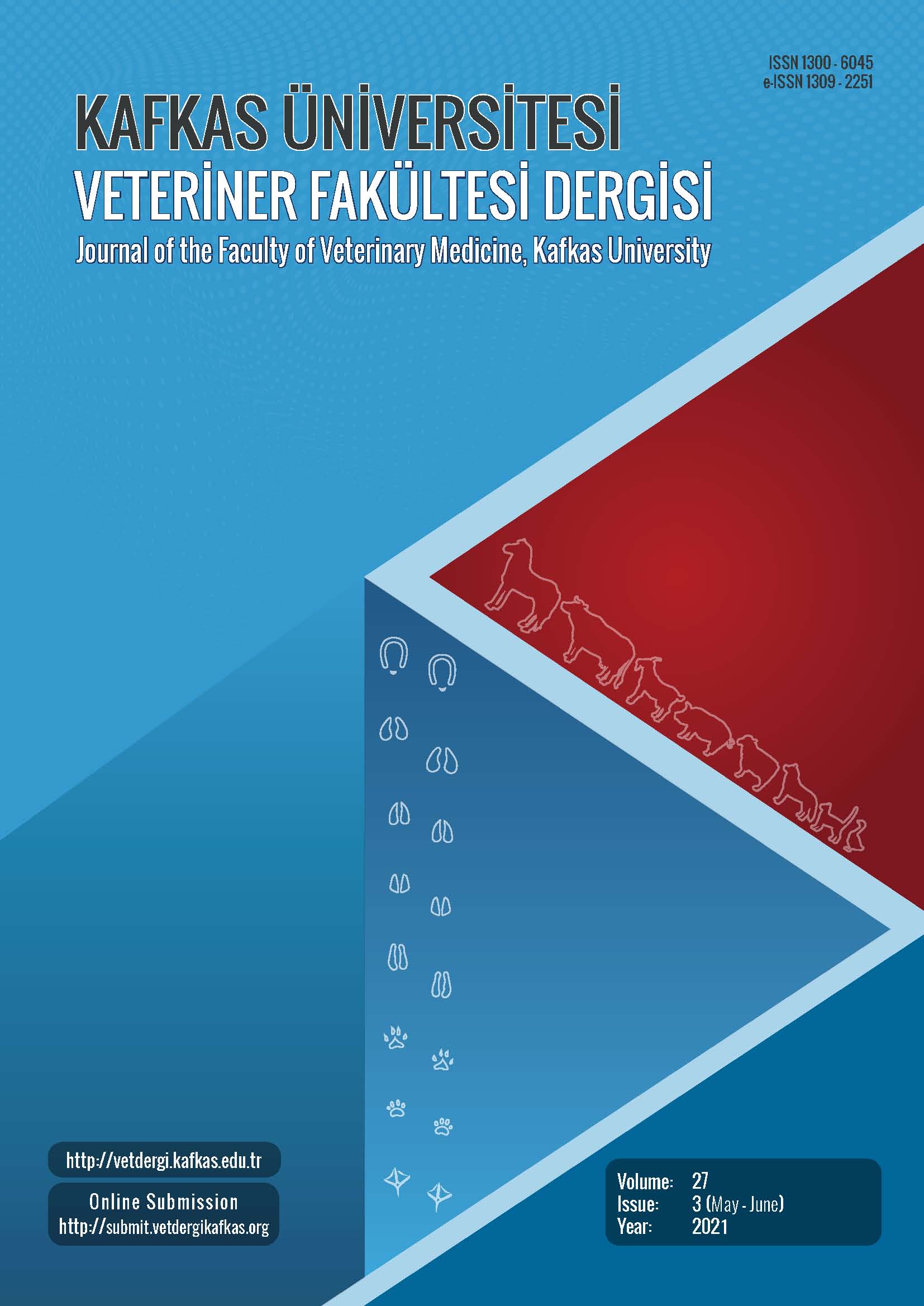
This journal is licensed under a Creative Commons Attribution-NonCommercial 4.0 International License
Kafkas Üniversitesi Veteriner Fakültesi Dergisi
2021 , Vol 27 , Issue 3
In vitro Antileishmanial Effect of the Plant Extracts from Aloe vera (L.) Burm.f. and Hypericum perforatum L. Leaves
1Mersin University, Faculty of Pharmacy, Department of Pharmaceutical Microbiology, TR-33169 Mersin - TURKEY2Mersin University, Faculty of Medicine, Department of Medical Microbiology, TR-33343 Mersin - TURKEY
3Mersin University, Faculty of Arts and Science, Department of Chemistry, TR-33343 Mersin - TURKEY DOI : 10.9775/kvfd.2021.25633 The activity of currently available antiparasitic drugs has been threatened by the occurrence of drug-resistant parasite populations, toxic eff ects, and high cost. Therefore, the discovery of more potent antiparasitic drugs coming from medicinal plants is seen as a signifi cant approach to overcome the problem. This study aimed to evaluate the in vitro effi ciency of plant extracts of Aloe vera (L.) Burm.f. and Hypericum perforatum L. leaves against promastigote forms of Leishmania tropica. The antileishmanial activity of the plant extracts was determined using in vitro microdilution method. Decreasing concentrations (25 to 0.01 mg/mL) of extracts were tested on Leishmania promastigotes. The eff ect of plant extracts on the viability of promastigotes of L. tropica was evaluated by counting viable or motile forms in a Neubauer hemocytometer. The data assessed as % growth in comparison to the controls. The 50% inhibitory concentration (IC50) values of the plant extracts were determined using The Quest Graph™ IC50 Calculator by logistic regression analysis. A. vera (L.) Burm.f. showed leishmanicidal activity at high concentrations of 25, 12.5, and 6.25 mg/ml with 100% growth inhibition of L. tropica promastigotes, while H. perforatum L. was found to be eff ective at the concentration range of 25 to 1.56 mg/mL. The IC50 of H. perforatum L. was determined as 0.23 mg/mL, and IC50 of A. vera (L.) Burm.f was determined as 1.91 mg/mL. Our study showed that A. vera (L.) Burm.f. and H. perforatum L. leaves can be a potential medicinal alternatives for the treatment of Leishmaniasis. The antiparasitic effi ciency of these plant extracts can be considered a signifi cant improvement in the specifi cation of antileishmanial agents and should be supported by further in vivo studies. Keywords : In vitro antileishmanial eff ect, Aloe vera (L.) Burm.f., Hypericum perforatum L.










